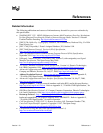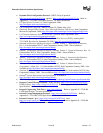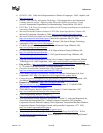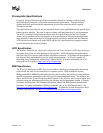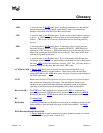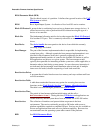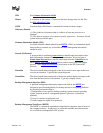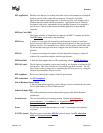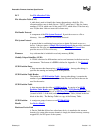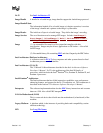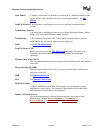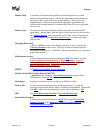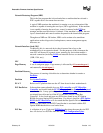
Glossary
Version 1.10 12/01/02 Glossary-3
CIM See Common Information Model.
Cluster A collection of disk sectors. Clusters are the basic storage units for disk files.
See File Allocation Table
.
COFF Common Object File Format, a standard file format for binary images.
Coherency Domain
(1) The global set of resources that is visible to at least one processor in a
platform.
(2) The address resources of a system as seen by a processor. It consists of both
system memory and I/O space.
Common Information Model (CIM)
An object-oriented schema defined by the DMTF
. CIM is an information model
that provides a common way to describe and share management information
enterprise-wide.
Console I/O Protocol
A protocol that is used during boot services
to handle input and output of text-
based information intended for the system administrator. It has two parts, a
Simple Input Protocol
that is used to obtain input from the ConsoleIn device
and a Simple Text Output Protocol
that is used to control text-based output
devices. The Console I/O Protocol
is also known as the EFI Console I/O
Protocol.
ConsoleIn The device handle that corresponds to the device used for user input in the boot
services environment. Typically the system keyboard.
ConsoleOut The device handle that corresponds to the device used to display messages to the
user from the boot services environment. Typically a display screen.
Desktop Management Interface (DMI)
A platform management information framework, built by the DMTF
and
designed to provide manageability for desktop and server computing platforms
by providing an interface that is:
(1) independent of any specific desktop operating system, network operating
system, network protocol, management protocol, processor, or hardware
platform;
(2) easy for vendors to implement; and
(3) easily mapped to higher-level protocols.
Desktop Management Task Force (DMTF)
The DMTF is a standards organization comprised of companies from all areas of
the computer industry. Its purpose is to create the standards and infrastructure
for cost-effective management of PC systems.



